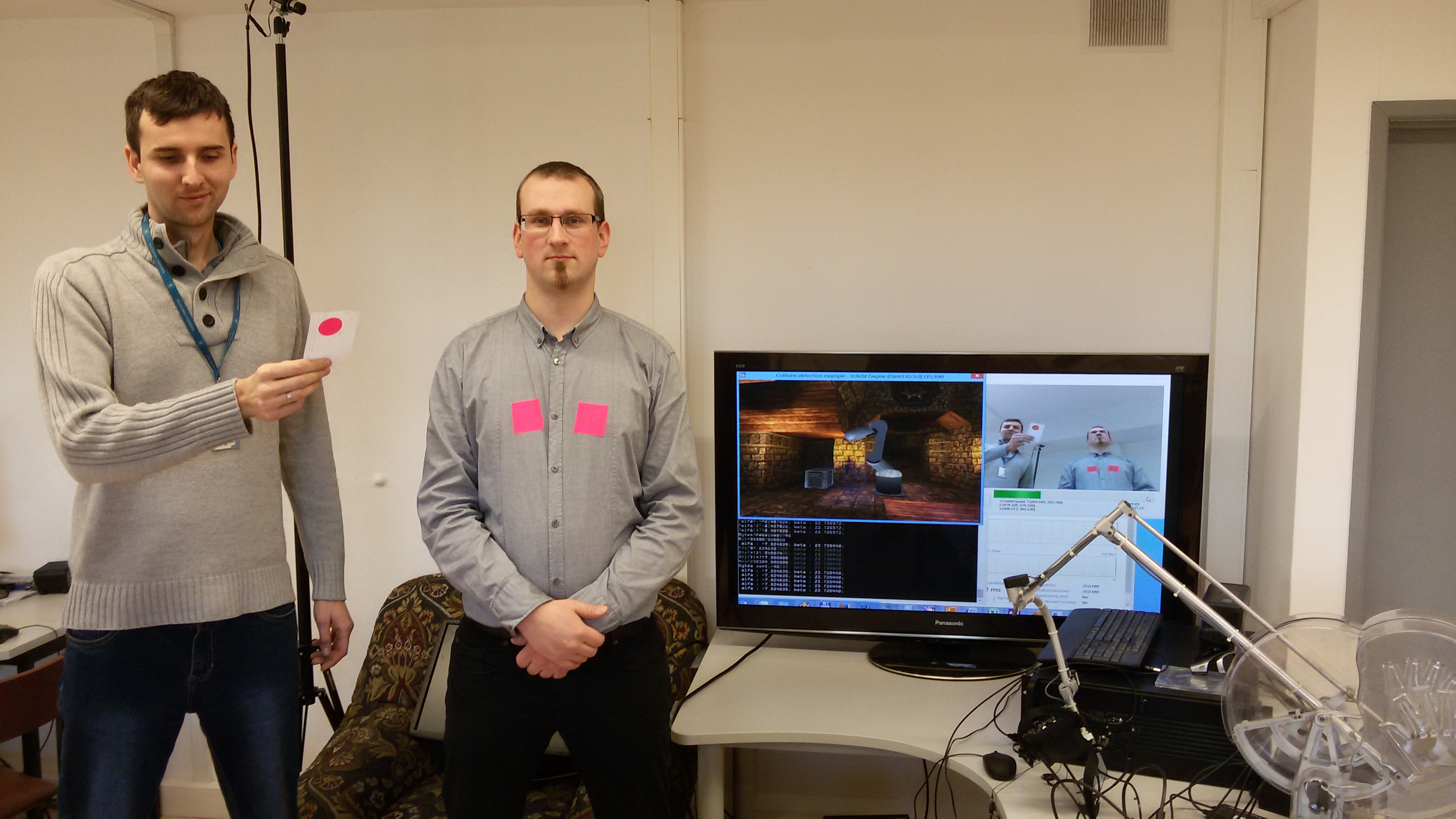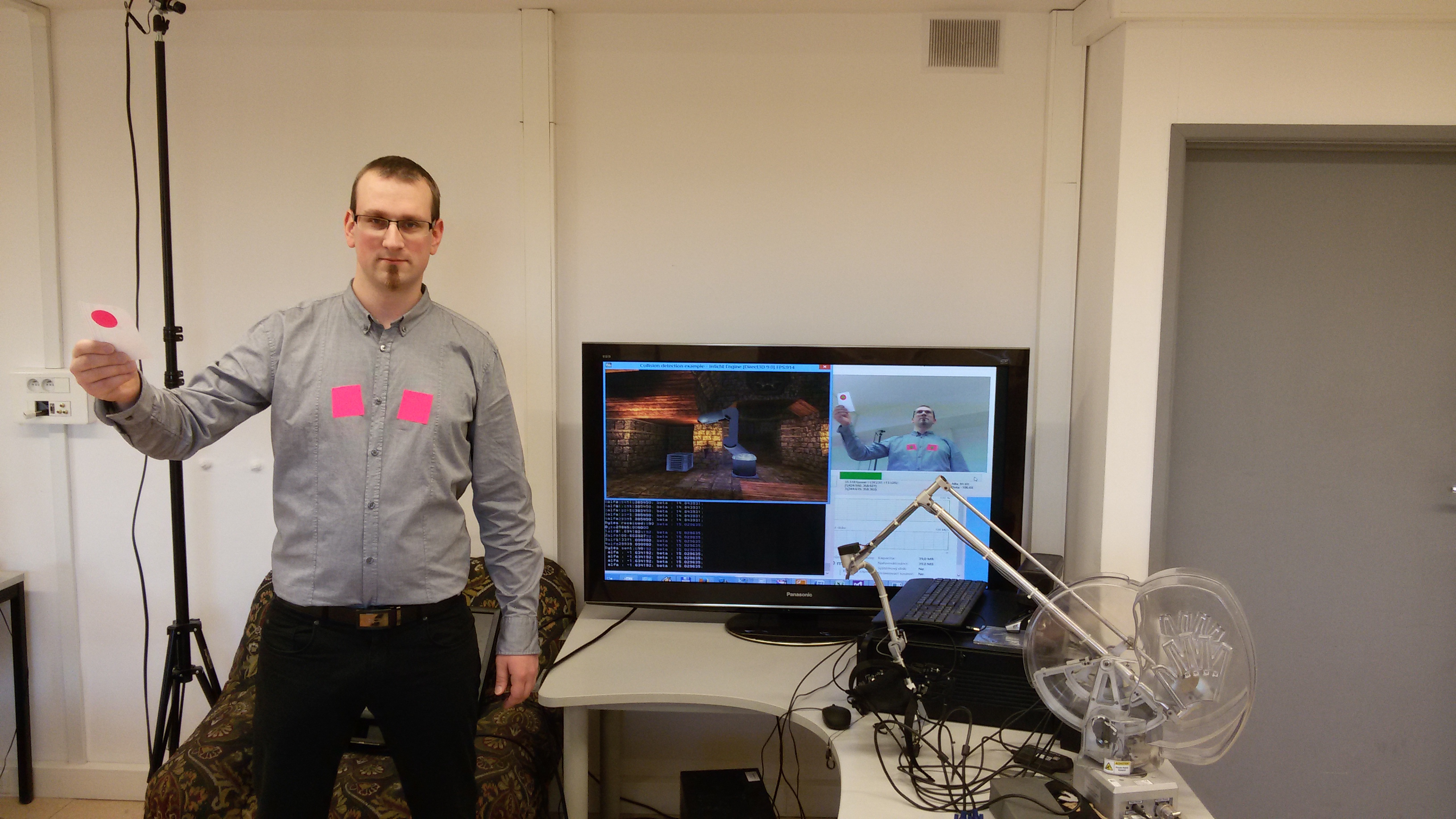Title : Visual system for virtual robotic manipulator control based on real time camera-image processing.
Project Lead : Michal Kasparek From : Technical University of Liberec (Czech Republic)
Dates : from 2014-07-14 17:28:34 to 2015-02-05 13:31:44
Description :
Motivation and objectives :
The contemporary fast technology development causes the technical devices getting outdated much faster than in the past. On the other hand contemporary computers provide great computational power and the development in IT technologies is focusing more on efficiency, energy conservation and multicore and multitasking techniques. This provides the possibility of using easily adaptable and upgradable virtual models of mechatronic and robotic devices. These virtual models can be used for teaching, mentorship, experiments or control system development or verification. The aim of this project is to create a virtual model of two-dimensional robotic manipulator and universal, portable and hardware independent control system for visual position control of the manipulator utilizing real-time camera-image analysis. The visual control system must be usable with any camera or web camera with sufficient resolution and image quality.
Teams :
The department of applied cybernetics deals with topics of robotics, mechatronics and regulation and control systems.
Dates :
starting date : 05 January, 2015
ending date : 16 January, 2015
Facilities descriptions :
http://visionair-browser.g-scop.grenoble-inp.fr/visionair/Browser/Catalogs/VDS.PL.html
Recordings & Results :
The aim of the project was to create a virtual model of two-dimensional robotic manipulator and universal, portable and hardware independent control system for visual position control of the manipulator utilizing real-time camera-image analysis. For manipulator animation the model of Motoman MH5 robot was implemented into attractive 3D environment available under the free open source licence of 3D graphic engine Irrlicht. The visualisation itself (the client program) runs as a separate program and waits for the data of manipulator position provided by the server. The visualisation runs in 3D accelerated environment with low GPU demands and high FPS (frames per second) count on an average machine. The recognition and visualisation system was tested with both an external industrial USB camera and basic laptop web camera and it was proved that with selected solution reliable and fast results can be obtained with an ordinary hardware equipment. Developed system utilizes image recognition algorithms, computation of inverse kinematic problem, TCP/IP communication protocol and virtual environment and manipulator model animation.
Conclusions :
The aim of the project was to create a virtual model of two-dimensional robotic manipulator and universal, portable and hardware independent control system for visual position control of the manipulator utilizing real-time camera-image analysis. For manipulator animation the model of Motoman MH5 robot was implemented into attractive 3D environment available under the free open source licence of 3D graphic engine Irrlicht. The visualisation itself (the client program) runs as a separate program and waits for the data of manipulator position provided by the server. The visualisation runs in 3D accelerated environment with low GPU demands and high FPS (frames per second) count on an average machine. The recognition and visualisation system was tested with both an external industrial USB camera and basic laptop web camera and it was proved that with selected solution reliable and fast results can be obtained with an ordinary hardware equipment. Developed system utilizes image recognition algorithms, computation of inverse kinematic problem, TCP/IP communication protocol and virtual environment and manipulator model animation.
Project Images :


Other project resources :
Kasparek_2.PDF
movie_Kasparek_2.mp4
.

VISIONAIR / Grenoble INP / 46 avenue Felix Viallet / F-38 031 Grenoble cedex 1 / FRANCE
Project funded by the European Commission under grant agreement 262044

Project funded by the European Commission under grant agreement 262044
